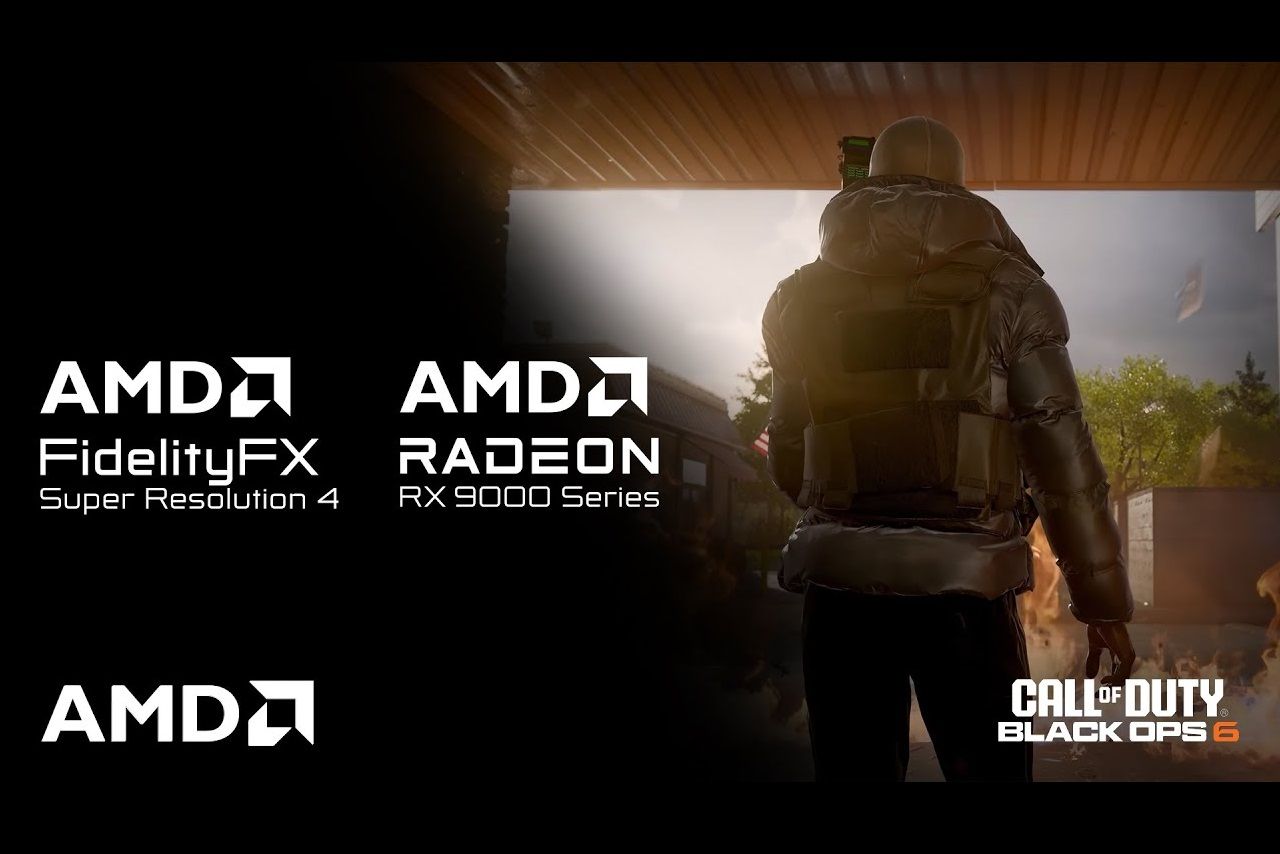
Evolution of AMD FidelityFX Super Resolution: From FSR 1 to 4
NVIDIA’s DLSS is widely known but not available to everyone. AMD has a different solution—FSR, which has developed over time and become competitive, while being available on a wider range of hardware.
AMD FidelityFX Super Resolution (FSR) is an image scaling technology developed by AMD as an open alternative to NVIDIA DLSS. It allows to render the game at a lower resolution and then upscales it to the target resolution with minimal loss of image quality. This significantly increases FPS with only a slight drop in visual quality. Below is an overview of the evolution of FSR from 2021 to 2025, from the first version, FSR 1, to the latest implementations of FSR 4 as of May 2025.
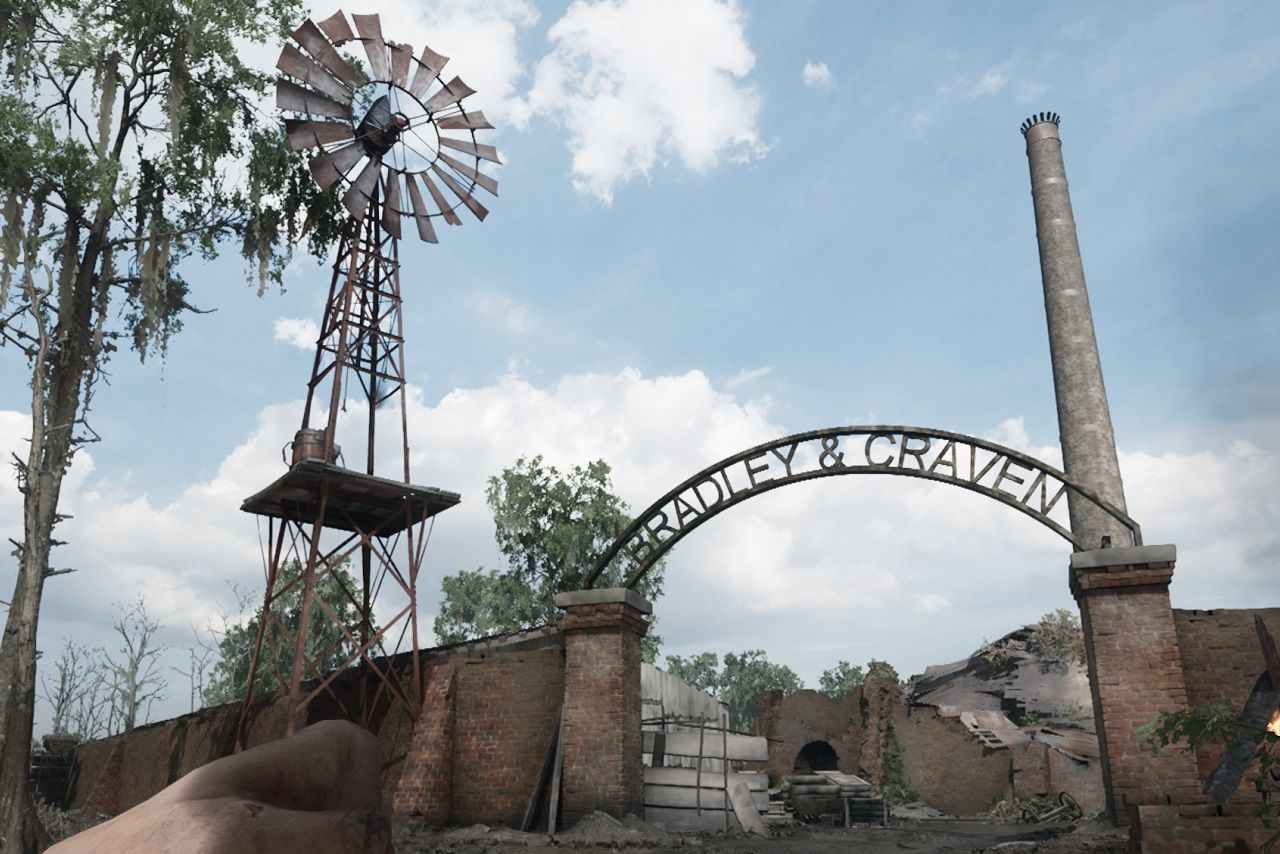
Timeline of AMD FSR Versions
- FSR 1.0, June 2021. Spatial upscaling, RCAS post-filter for sharpness, 4 quality modes, no use of AI.
- FSR 2.0, May 2022. Temporal upscaling, integrated anti-aliasing based on TAA, significantly higher image quality, and does not require ML cores.
- FSR 2.1, September 2022. Improved image stability over time: reduced ghosting and flickering of objects. Temporal reconstruction artifacts have been fixed, and the accuracy of calculations has been improved.
- FSR 2.2, November 2022 (public in February 2023). Refinements for dynamic scenes, new logic for reducing ghosting during fast movement. The FSR 2.2 plugin was released for Unreal Engine in March 2023.
- FSR 3.0, September 2023. Added Frame Generation, an interpolation technology that doubles FPS by inserting intermediate frames. Basic upscaling still uses the FSR 2.2 engine.
- FSR 3.1, March 2024. The upscaling algorithm was improved: higher image clarity and stability, less flickering, and fewer artifacts. FSR Frame Generation is now separated from upscaling, so it can be used with other upscalers (DLSS, XeSS). Added support for Vulkan and Xbox GDK console.
- FSR 4.0, February 2025. Introduced an AI module using RDNA 4. AMD demonstrated a huge FPS increase in Ratchet & Clank: Rift Apart on the RX 9070 XT, for example. Upscaling and Frame Generation are activated with a single checkbox in the driver menu. Officially supported only on the RX 9000 series, but developers promise a passive mode without AI for other GPUs.
AMD originally designed the FSR as a hardware-independent solution—it is capable of running on GPUs from different manufacturers and on consoles.
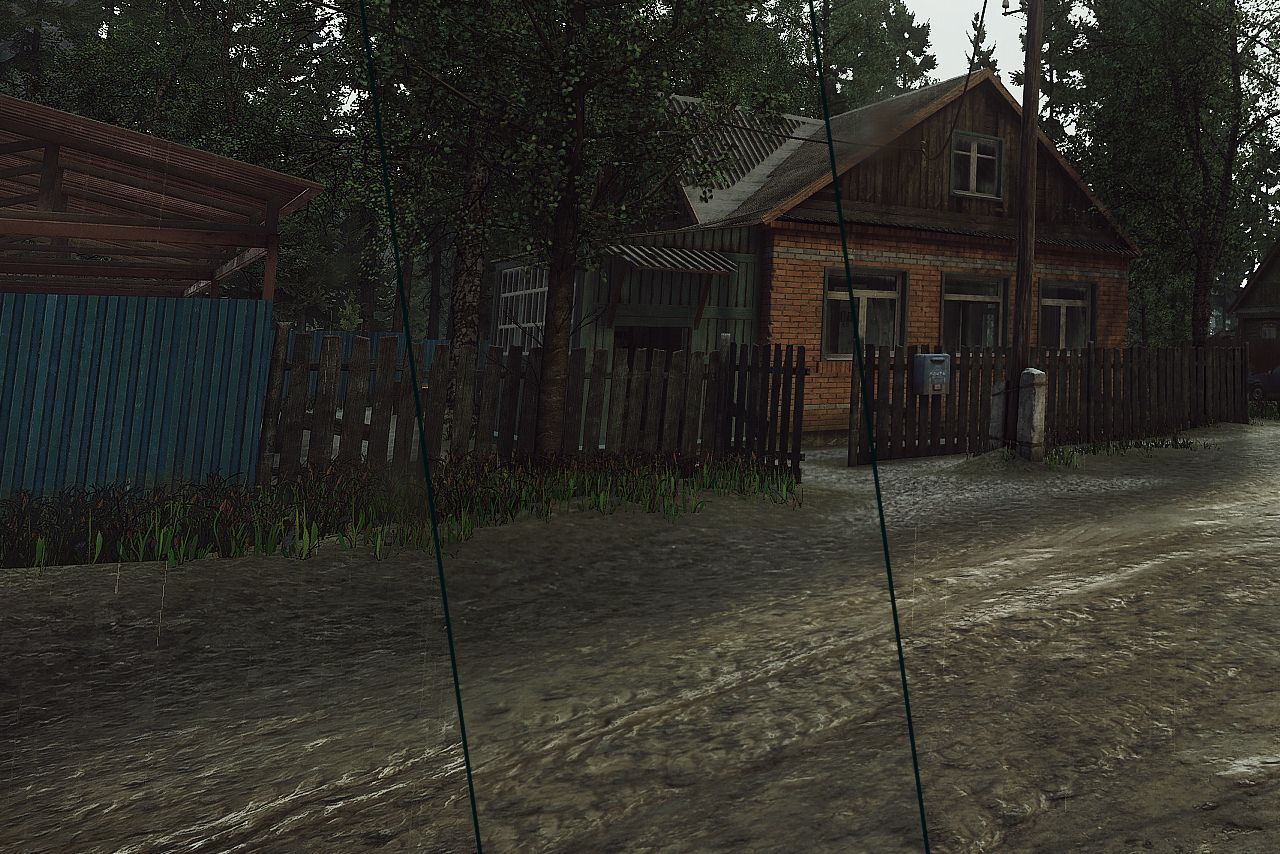
AMD FSR Versions Explained
FSR 1
The first version debuted in the summer of 2021 and was AMD’s first step into the field of super resolution. At launch, the technology was implemented in 7 games, including Godfall and Terminator: Resistance, and soon became available to all developers on GPUOpen as an open SDK.
Key features of FSR 1
Spatial image scaling method that is performed in one pass, based on the finished frame without taking motion data into account. The algorithm consists of step-up filtering and a subsequent sharpness post-filter. AMD applied a combination of proprietary technologies: edge-adaptive spatial upscaling (EASU) for smart zooming with an emphasis on edge clarity, and robust contrast-adaptive sharpening (RCAS) for local image sharpening.
Unlike neural network-based solutions, FSR 1.0 does not require dedicated tensor cores or AI hardware, all calculations are performed using conventional shaders, making the technology compatible with a wide range of GPUs, including older Radeon models and even competing NVIDIA graphics cards.
FSR 1 quality modes
It offered 4 modes: Ultra Quality, Quality, Balanced, and Performance. Each determines the degree of reduction in the original render resolution and, accordingly, the FPS gain. For example, the Quality mode renders at ~75% of the target resolution horizontally (the same principle as DLSS), giving a noticeable performance boost with minimal loss in clarity. In tests, Quality mode delivered ~20-30% more FPS compared to native 4K, and in Performance mode—up to 2x the frame rate, at the cost of reduced detail in small objects.
FSR 1 limitations
Since FSR 1.0 does not use motion data between frames, its algorithm is in many ways similar to an advanced zoom filter. It does a good job of enhancing the clarity of static scenes, but has limitations. This version requires a high-quality input frame with anti-aliasing already applied, otherwise, upscaling would simply enhance jagged edges and noise. Therefore, for best results, the game should have been rendered with anti-aliasing enabled (like TAA) before applying FSR. Otherwise, aliasing may appear on fine details after upscaling. Another consequence of the purely spatial approach is that with a very low input resolution, the algorithm lacks sufficient data to reconstruct fine details, which leads to blurring and flickering.
FSR 1 efficiency
FSR 1.0 focused on maximum speed. As a result, overhead is minimal, the technology is suitable even for weaker GPUs. This allowed AMD to integrate FSR 1.0 not only into games but also into its drivers. In January 2022, the Radeon Super Resolution (RSR) mode was added, using the FSR 1.0 algorithm for upscaling in any game at the driver level.
FSR 1 compatibility
One of the main advantages of FSR 1.0 is its cross-platform nature. AMD reported that FSR 1.0 is supported on Radeon graphics cards starting with the RX 400 series and later, as well as on integrated Ryzen graphics (APUs). Moreover, FSR 1.0 also worked well on competitors’ GPUs. Thanks to its openness, FSR 1.0 was even available on consoles: game developers were able to integrate it into projects for PlayStation 5 and Xbox Series X|S. In particular, Xbox quickly added FSR 1.0 to its Game Development Kit (GDK) for convenience. Thus, in terms of hardware coverage, FSR 1.0 had a clear advantage over proprietary DLSS.
DLSS alternative
The launch of FSR 1.0 generated strong interest among gamers and developers. Users without RTX graphics cards (required for DLSS) responded positively. Finally, a universal alternative had arrived that could boost FPS. Nevertheless, FSR 1.0’s image quality was criticized at lower settings, where the image could appear blurry, with noticeable loss of detail. Compared to DLSS 2.0 (already available in 2021), FSR 1.0 was inferior in reproducing fine detail and stability during motion.
Even so, the ease of integration played a major role: by the end of 2021, dozens of games had added support for the technology, and AMD stated that FSR had become the fastest-deployed software solution in the company’s history.

FSR 2.0
A year later, AMD introduced FidelityFX Super Resolution 2.0, which marked a significant leap forward compared to FSR 1.0. While the first version relied on a single frame, FSR 2.0 used data from multiple frames (a temporal approach), significantly improving the quality of upscaling. In June 2022, AMD released the FSR 2.0 source code on GPUOpen, making it publicly available to all developers.
Key features of FSR 2.0
Temporal upscaling—the main innovation. FSR 2.0 gathers information not only from the current frame but also from previous ones, based on motion vectors of objects and the depth buffer provided by the game engine. This allows it to reconstruct fine details that are missing from a low-resolution single-frame image, as well as better handle areas that become visible due to movement. In effect, FSR 2.0 is similar in function to technologies like DLSS 2.x—it increases resolution using historical movement data of the scene.
FSR 2.0 functions not only as an upscaler but also as a high-quality temporal anti-aliasing solution. During reconstruction, it smooths out jagged edges and noise, producing a clean final image. Thus, this version replaces the game’s standard TAA. While FSR 1.0 required that the input frame already be anti-aliased, FSR 2.0 performs its own anti-aliasing—developers do not need to apply a separate TAA. This solved one of FSR 1.0’s main issues: even at low initial resolution, the algorithm now tries to minimize aliasing by accumulating data over several frames.
Thanks to these changes, FSR 2.0 comes much closer to native-resolution image quality. Independent tests confirmed the major progress: in Deathloop, the upscaled frame with FSR 2.0 looked even sharper than native 4K, due to the algorithm’s sharpening process. FSR 2.0 provides high sharpness and detail that is nearly indistinguishable from native resolution, while also delivering around a 30% increase in FPS.
FSR 2.0 performance
Although FSR 2.0 involves more complex calculations, the algorithm is still optimized for efficiency and does not require AI hardware. AMD emphasized that FSR 2.0 does not need specialized ML cores—all processing is done using standard shaders, making the technology compatible with a wide range of GPUs. Naturally, the improved quality comes at the cost of slightly lower FPS compared to FSR 1.0, but the overall gain over native rendering remains substantial. All quality modes were retained in version 2.0, allowing users to choose their preferred balance between FPS and image clarity.
Unlike FSR 1.0, the new version required deeper integration into the game’s rendering pipeline. Developers had to pass the necessary resources to the FSR 2.0 shader. This made integration more complex, but AMD sought to simplify the process by providing detailed documentation and sample implementations. FSR 2.0 supported DirectX 12 and Vulkan (as well as DirectX 11 with some modifications). Later, AMD released ready-made plugins for Unreal Engine 4 and 5, greatly simplifying integration into UE-based projects.
By the summer of 2022, it was announced that FSR 2.0 would be supported in the Xbox Game Development Kit (GDK), meaning it was officially available for use in games on Xbox Series X|S. Xbox consoles with RDNA 2 architecture could thus fully benefit from temporal upscaling. No equivalent official library was announced for PlayStation 5, but developers were able to integrate FSR 2.0 into their engines manually, which some studios did.
FSR 2.1
In the fall of 2022, the FSR 2.1 update was released, focused on eliminating temporal filtering artifacts. In version 2.0, players and testers noted typical problems of TAA-based upscaling: ghosting and shimmering. The first game with FSR 2.1 was Farming Simulator 22.
FSR 2.2
At the end of 2022, AMD introduced the next iteration. The first games to implement FSR 2.2 were Need for Speed Unbound and F1 22. The focus again was on artifact reduction. In particular, AMD improved handling of very fast-moving objects: new logic was added to reduce motion blur trails from racing cars, particles, and other rapid elements.
Moreover, FSR 2.2 improved compatibility across game engines and introduced minor optimizations. In February 2023, FSR 2.2 became publicly available on GPUOpen, and a ready-made plugin for Unreal Engine 5 was released, making it easier to upgrade projects from FSR 2.0 or 2.1 to 2.2.
By early 2023, the number of games using FSR continued to grow rapidly. According to AMD, by December 2022, there were already 226 released and announced games with FSR, and by March 2023, this number had risen to around 250; FSR 2 was gradually replacing FSR 1 in new titles due to its clear superiority in image quality.
DLSS vs FSR
Although DLSS 2.0/2.3 was still sometimes superior in very complex scenes, the difference had become minimal. Meanwhile, FSR remained open-source and available on a wide range of GPUs, which boosted its appeal to developers.
Throughout 2022-2023, many game updates added FSR 2 support. Titles like Dying Light 2, Cyberpunk 2077, God of War (PC), and dozens of others received patches with FidelityFX Super Resolution 2, often in response to community requests. Players actively advocated for FSR 2 integration, frequently asking developers to add it in games that only supported DLSS.
Thus, the second generation of FSR solidified AMD’s success in the upscaling scene: the technology became widespread.
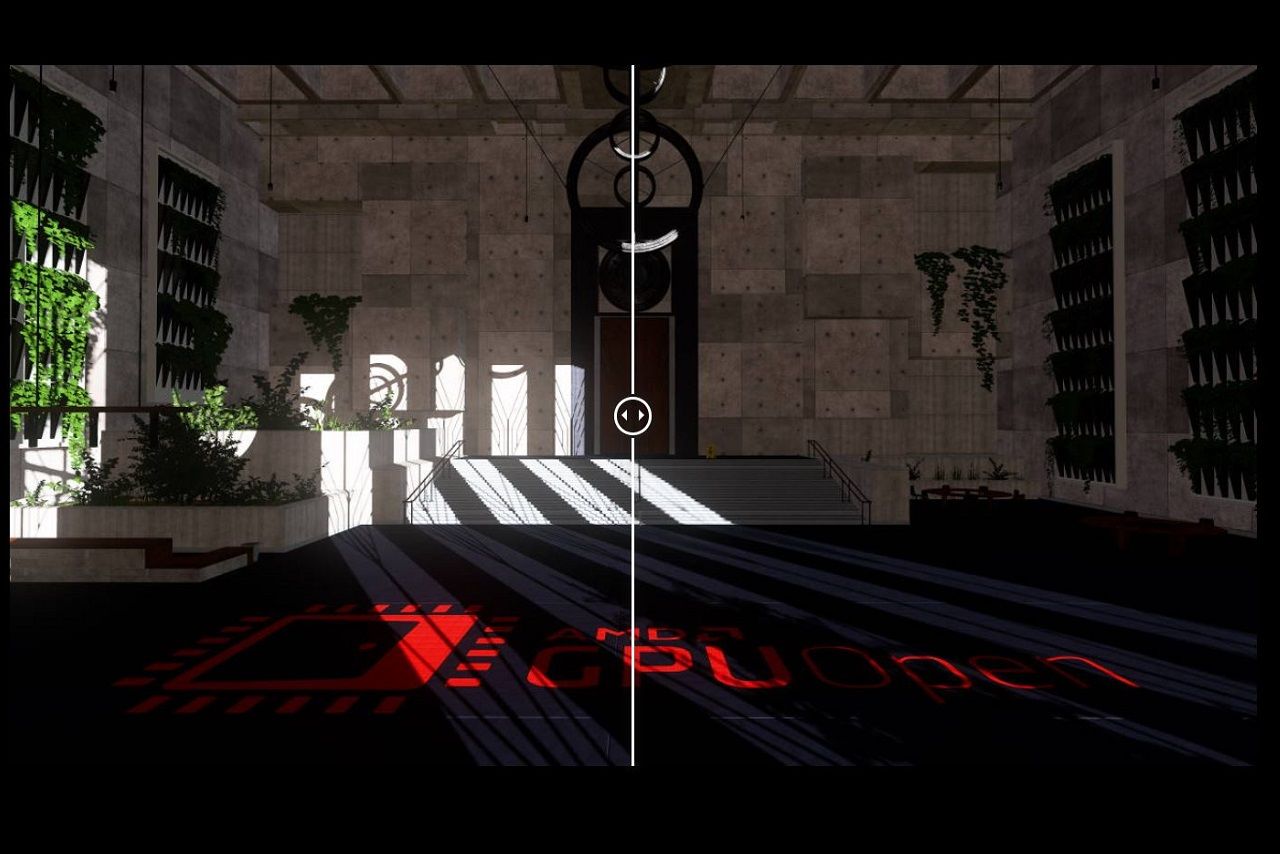
FSR 3.0
Another major development milestone, FidelityFX Super Resolution 3.0, was officially introduced alongside the Radeon RX 7000 (RDNA 3) graphics cards at the end of 2022. AMD intrigued the public with the announcement of the Fluid Motion Frames feature (frame generation similar to one in NVIDIA DLSS 3). In September 2023, the first game updates with FSR 3.0 were released. The launch titles were Forspoken and Immortals of Aveum, where patches activated FSR 3.0 (upscaling + FSR frame generation mode). Simultaneously, the FSR 3.0 SDK was published on GPUOpen for developers.
Key features of FSR 3.0
In addition to the familiar temporal upscaling (inherited from FSR 2.2), AMD added a frame generation (FG) component capable of synthesizing a new frame between two rendered ones. With FG enabled, the perceived FPS can theoretically double. AMD branded this implementation Fluid Motion Frames.
The generation shader takes pixels from the two prior frames, shifts them according to motion data, and reconstructs the new intermediate image. This additional frame is then inserted into the output stream, effectively doubling the output framerate. Simply put, FSR 3.0 alternates real game frames with interpolated ones, drawing them on the fly between game logic updates.
It’s important to note that the FSR 3.0 upscaler itself did not initially receive any quality improvements over FSR 2.2. AMD confirmed that the main new feature in version 3.0 was frame generation, while resolution upscaling continued to use the same shader as FSR 2.2. Some enthusiasts were disappointed, expecting a visual upgrade, but received mostly a performance boost without enhanced clarity. Still, the addition of Fluid Motion Frames was significant in itself—AMD became the first to offer a real-time frame generation system in an open, non-hardware-locked format.
FSR 3.0 compatibility
Since frame generation is a resource-intensive process, AMD outlined GPU recommendations. To activate it on AMD hardware, at least a Radeon RX 5000 series card (RDNA 1, 2019) is required. Full support is provided on RX 6000 and newer (RDNA 2+).
NVIDIA also confirmed compatibility for GeForce RTX 20+ series—these GPUs include the Optical Flow Accelerator block, which can assist in the generation process. Although AMD stated that it doesn’t officially guarantee support on competitors’ GPUs, tests have shown that FSR 3.0 frame generation works on both NVIDIA and Intel Arc cards. Attempting to use FG on very old models (without optical flow support) may technically work, but places a heavy load on shader units, making it impractical. So, realistic minimum requirements—GPUs from 2020 and newer.
FSR 3.0 requires modern graphics APIs (DirectX 12 or Vulkan) and is relatively complex to integrate. However, AMD simplified adoption by providing a unified FidelityFX SDK, which includes FSR 3.0 as a library with straightforward integration.
Frame generation: FSR vs DLSS
Frame generation is a complex technology that can introduce side effects. One of the key issues is increased input latency. Even though FPS increases, actual game updates (game logic frames) occur at the original rate. NVIDIA mitigates this in DLSS 3 with its Reflex technology, which reduces rendering queue latency. AMD has a similar feature, Radeon Anti-Lag+, but at FSR 3.0’s launch, its integration with FG was limited.
Forspoken players were among the first to try FSR 3.0. Impressions were mixed: on one hand, many praised the noticeable FPS boost. On the other hand, there were issues with frame pacing (stuttering). Some users noted that smoothness improved only after disabling V-Sync and capping the frame rate manually.
Nevertheless, the overall response was positive, as FSR 3.0 brought frame generation to a wide range of GPUs, not just NVIDIA’s RTX 40 series—like DLSS did. The community quickly embraced the feature: modders even figured out how to enable FSR 3 FG in games where it wasn’t officially supported, replacing DLSS files with FSR 3 libraries to unlock frame generation on AMD GPUs. This demonstrated the high level of public interest and demand for open frame generation technology.
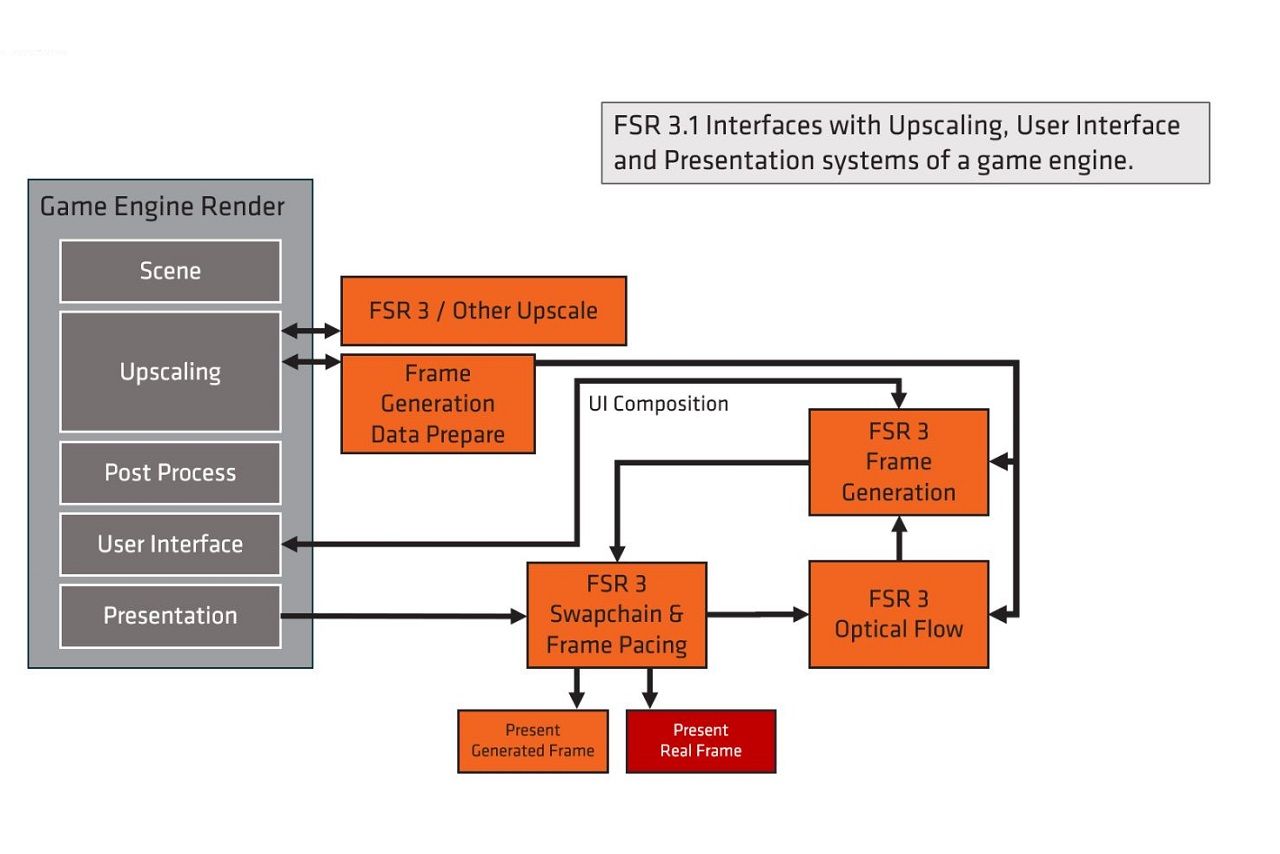
FSR 3.1
AMD introduced FidelityFX Super Resolution 3.1 at GDC 2024 in response to feedback on the previous version. Public patches arrived in spring 2024 for Ghost of Tsushima, Horizon Zero Dawn, Spider-Man Remastered, and Ratchet & Clank: Rift Apart.
Key features of FSR 3.1
New upscaler with higher temporal stability. AMD rebuilt the Super Resolution shader to preserve fine geometry and suppress temporal artifacts. Users see markedly less flicker, shimmer, and ghosting. FPS boost stayed the same as in the 3.0 version.
Decoupled frame generation. In 3.0, FG was hard-wired to FSR upscaling. Version 3.1 makes FG source-agnostic, so developers can pair AMD Fluid Motion Frames with any existing upscaler, including NVIDIA DLSS or Intel XeSS. Ghost of Tsushima already demonstrates the combo: players may render with DLSS Super Resolution yet still enjoy FG on any FSR supported GPUs. This modular design broadens adoption, especially for graphics cards that lack NVIDIA’s latest tensor-core hardware.
Broader platform support. Official Vulkan and Xbox GDK support simplify integration in Vulkan-based titles and pave the way for console patches. Studios can now target 120 fps on Series X|S by inserting generated frames where native rendering tops out at 60 fps. PC ports running id Tech, Decima, or custom Vulkan engines likewise gain a straightforward path to FSR.
Forward-compatible SDK. FSR 3.1 debuts forward compatibility. Once a game integrates 3.1, later 3.x drops can be enabled by swapping DLLs, so no need to rewrite code or change shaders. That policy accelerated bug-fix roll-outs and visual refinements.
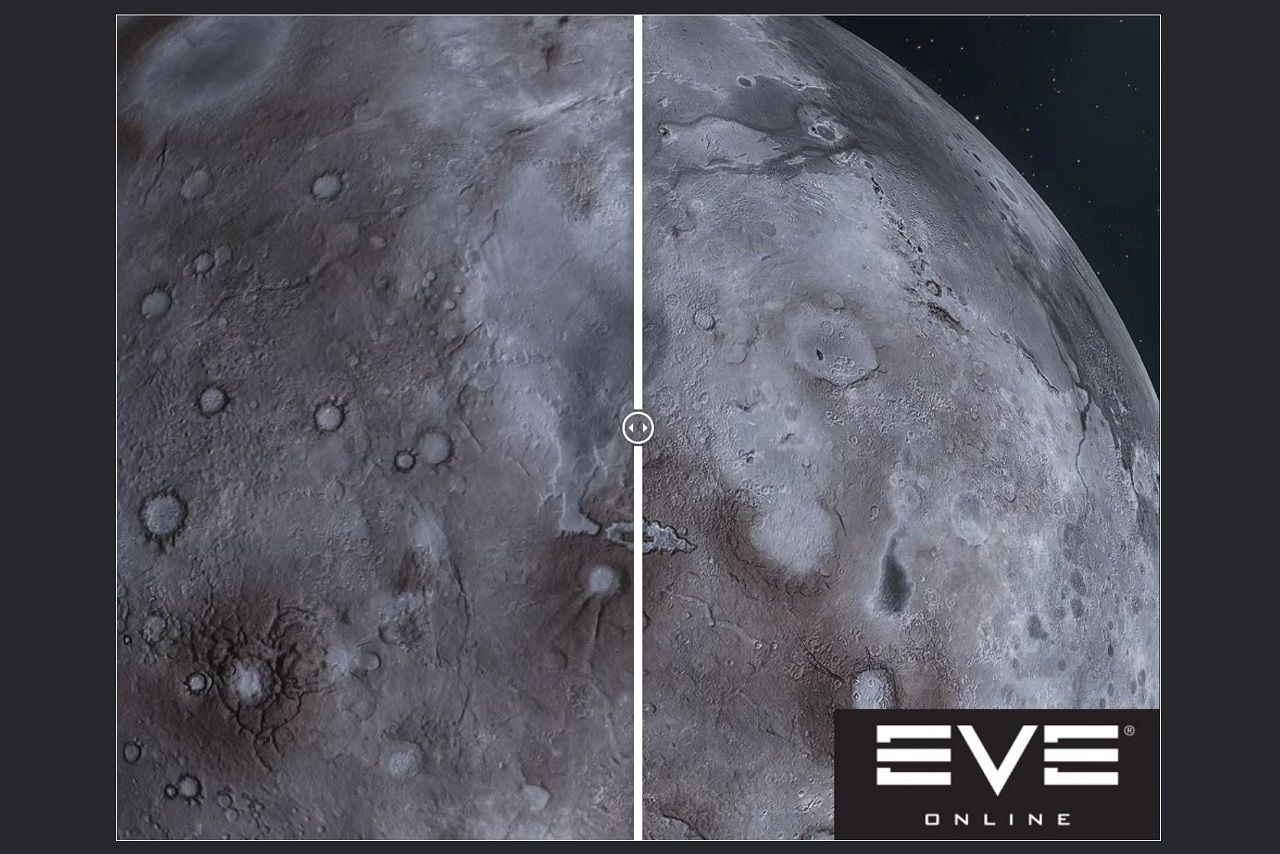
FSR 4
In 2025, AMD introduced FidelityFX Super Resolution 4 (FSR 4), a significant step forward in the development of upscaling technology, based entirely on machine learning for the first time. Unlike previous versions, FSR 4 uses neural network models, including convolutional and transformer architectures, which allow for noticeable improvements in image quality and performance.
FSR 4 is exclusively supported on Radeon RX 9000 series graphics cards based on the RDNA 4 architecture (RX 9070, RX 9070 XT, etc.). These GPUs are equipped with second-generation AI accelerators necessary for the operation of the new upscaling algorithms. Unlike earlier versions of FSR, which were compatible with a wide range of graphics cards—including models from NVIDIA and Intel—FSR 4 requires specialized hardware, which limits its availability.
When it works, though, it works. AMD’s numbers show titles like Call of Duty: Black Ops 6 and Horizon Forbidden West punching out two to three times the frames at 4K once FSR 4 is switched on. It’s simple: upscale first with the ML model, then slide in a generated frame between every rendered one. You end up with a smooth image without overloading the GPU harder than before.
FSR 4 also includes improved frame smoothing and interpolation techniques, which are especially useful for portable devices and laptops with limited resources (ASUS ROG Ally, Lenovo Legion, and more). Usage of FSR 4 can significantly extend battery life by utilizing resources more efficiently.
Consoles aren’t being left behind either. Sony has confirmed that the PlayStation 5 Pro will tie FSR 4 into its FSR graphics pipeline in 2026, promising sharper visuals and higher frame-cap modes without rewriting a game from scratch.
In short, FSR 4 isn’t just another incremental tweak, it’s AMD’s best swing at AI-powered upscaling. If you’ve got the hardware, it’s an easy win.
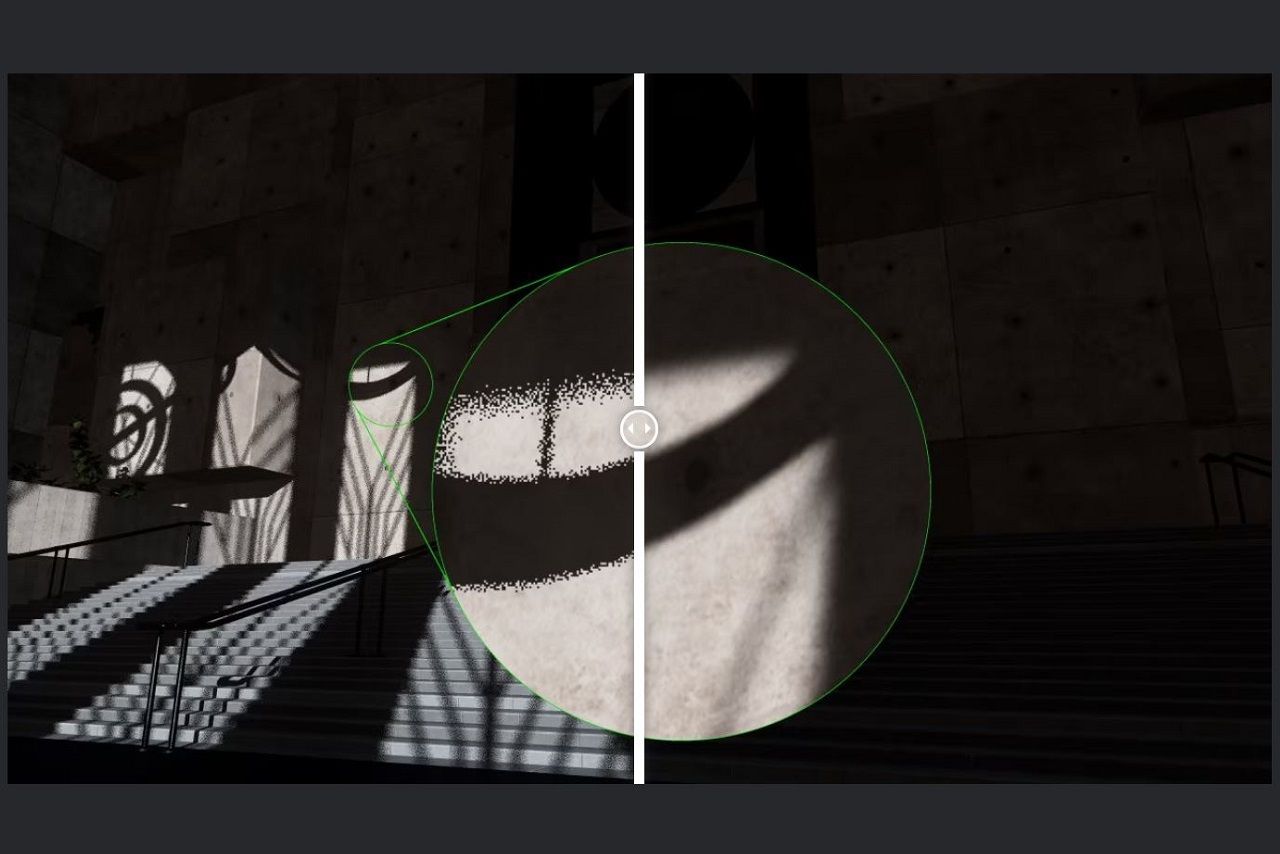
FAQ
What is FSR / What is AMD FSR?
It is an open-source graphics feature that lets games run faster by rendering at a lower resolution and smartly upscaling the image to look almost native.
FSR meaning / FSR AMD meaning
It stands for FidelityFX Super Resolution, AMD’s open standard for real-time image upscaling in games.
How does FSR work?
FSR analyzes each low-resolution frame, reconstructs missing detail with spatial or temporal algorithms, then applies sharpening so you gain higher frame rates with visuals that stay crisp.
FSR: Summary
AMD’s FidelityFX Super Resolution has steadily evolved from a basic upscaling method into a powerful and accessible alternative to DLSS. With version 3.1, it now stands as a mature solution that balances performance and visual quality across a wide range of hardware. And FSR 4 is comparable to DLSS 4, but available only on specific GPUs. So gamers now have a variety of options: DLSS or FSR, or even XeSS.













